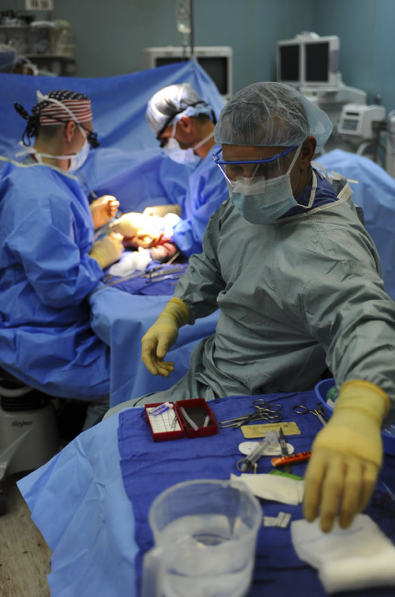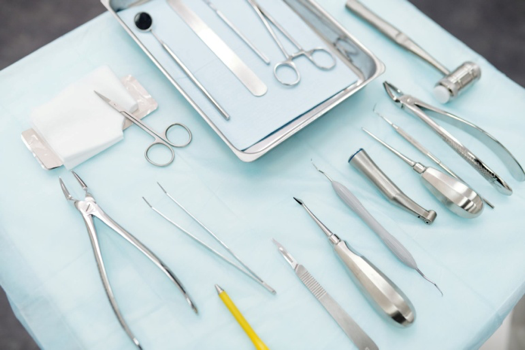What are the main vascular & venous procedures used to treat vascular disease? Our body contains an extensive network of blood vessels that make up the circulatory system. They are responsible for the effective and healthy blood flow insider our body to perform internal and peripheral functions.
Our blood vessels network comprises:
- Arteries- that carry blood from our heart to the other parts of our body
- Veins- that carry blood from our different parts of the body back to the heart

(Source)
What Are Vascular and Venous Diseases?
Vascular diseases and conditions comprise the health problems that affect our circulatory system. Overall, vascular and venous diseases affect our blood vessels (i.e., veins and arteries) that lead to ineffective and unhealthy blood flow conditions.
Consequently, such diseases pose a significant threat to our overall health and may even lead to severe health problems. Here are a few types of vascular and venous diseases:
- Atherosclerosis – it is a condition in which plaque builds up insider your arteries that comprises calcium, fat, cholesterol, and some other substances. Generally, this creates a blockage, disrupting the blood flow and damaging the vein structure.
- Raynaud’s Disease – it causes the blood vessels to become narrow when you are under stress or feeling cold.
- Varicose Veins – these are large, twisted, swollen, and colored veins that appear on the skin (usually the backside of the legs).
- Aneurysm – it is the bulging of the wall of an artery (or arteries).
- Coronary Arterial Diseases
- Carotid Artery Disease
- Blood Clots
- Deep vein Thrombosis
- Pulmonary Embolism
- Vasculitis – blood vessels inflammation
- Stroke
When Might a Surgery Be Necessary?
Surgeries are critical once the blood clots or the pooling of blood creates disruption in the circulatory system. The condition is progressive, which means that it can lead to severe symptoms over time.
They might include occasional discomfort around the skin area, pain, aching, tingling, etc. Aside from that, there may be a need for surgical procedures to take place once your vascular surgeon suggests that the condition may be moving towards severity.
Vascular & Venous Procedures: Non-Invasive Surgical Procedures
Angioplasty
During angioplasty, your vascular surgeon will insert a catheter tube that will carry a small wire holding deflated balloon. Once the wire reaches the narrowest point of the vein, the balloon will inflate to stretch and expand the vein.
Similar to angioplasty, during stenting, a vascular surgeon uses a small cylindrical cage that expands along with the balloon to keep the vein open.
Sclerotherapy
Sclerotherapy is the injection of chemicals that are highly concentrated salt solutions. Once they enter the damaged veins, they form a foam-like or liquid solution that helps to seal off the enlarged, swollen, and twisted veins. Eventually, the damaged veins collapse, and within a few weeks of time, they disappear.
Catheter Thrombolytic Therapy
Thrombolytic therapy involves delivering clot-dissolving substances and medications to the part of a damaged vein where the blood clot exists. Your vascular surgeon might use a catheter to deliver the clot-dissolving medication.
Endovenous Laser Ablation Therapy
It involves the use of radio waves (high frequency) or laser to close the damaged veins by heating to form scar tissue.
Percutaneous Vena Cava Filters
Percutaneous Vena Cava Filters is a treatment option most suitable for people that are intolerant to or cannot take blood-thinning medication (anticoagulant).
Vascular & Venous Procedures: Surgical Treatments (Invasive Surgeries)
Ligation/Stripping
Ligation/stripping is a combination of two separate procedures that deliver effective results in most cases. It is the use of surgical instruments to mark precise incisions or cuts on the skin area with the damaged veins.
Your vascular surgeon may utilize several different approaches. However, they may tie the ends and remove the damaged part of the vein entirely.

(Source)
Subfascial Endoscopic Perforator Surgery (SEPS)
SEPS is a minimally invasive surgical procedure to treat chronic venous diseases and conditions, such as ulcers. Ulcers may appear due to deep vein thrombosis and, often, due to chronic venous insufficiency. In these conditions, perforating veins disrupt the blood flow between the superficial and deep veins (usually above the ankles).
During the procedure, your vascular surgeon may use a balloon to separate the damaged vein from surrounding tissues. Consequently, your vascular surgeon may dissect the damaged veins to enable healing of the ulcers.
Bypass Operation
In simple words, bypass is the use of surgical methods to create alternate pathways for the blood to flow away from the damaged and blocked blood vessels. This rerouting procedure for the blood flow involves blood vessel grafting.
The graft may be from another healthy vein or vessel in your body or a synthetic tube that replaces the damaged part of the blocked vein. In addition, the vascular surgeon will remove the damaged segment of the dissected part. Conclusively, the new segment will enable a healthy blood flow and may help to prevent any blockages in the long run.
Vascular & Venous Procedures: Conclusion
Do you want to discuss treatment options for venous & vascular disease with one of the best vascular surgeons in NYC? Dr. Norman Chideckel, MD at The Vascular Surgery & Vein Center is among the most qualified expert vascular surgeons.
Give us a call at 212-993-6133 to get help for your vascular & venous diseases. Visit our official website to learn more.
Reference Links
https://nyulangone.org/conditions/chronic-venous-insufficiency-in-adults/treatments/minimally-invasive-procedures-for-chronic-venous-insufficiency
https://www.vascularsociety.org.uk/patients/procedures/11/endovenous_ablation
https://www.urmc.rochester.edu/surgery/specialties/division-of-vascular-surgery/vein-center/treatments.aspx
https://www.webmd.com/heart-disease/vascular-disease
https://my.clevelandclinic.org/health/diseases/17604-vascular-disease

